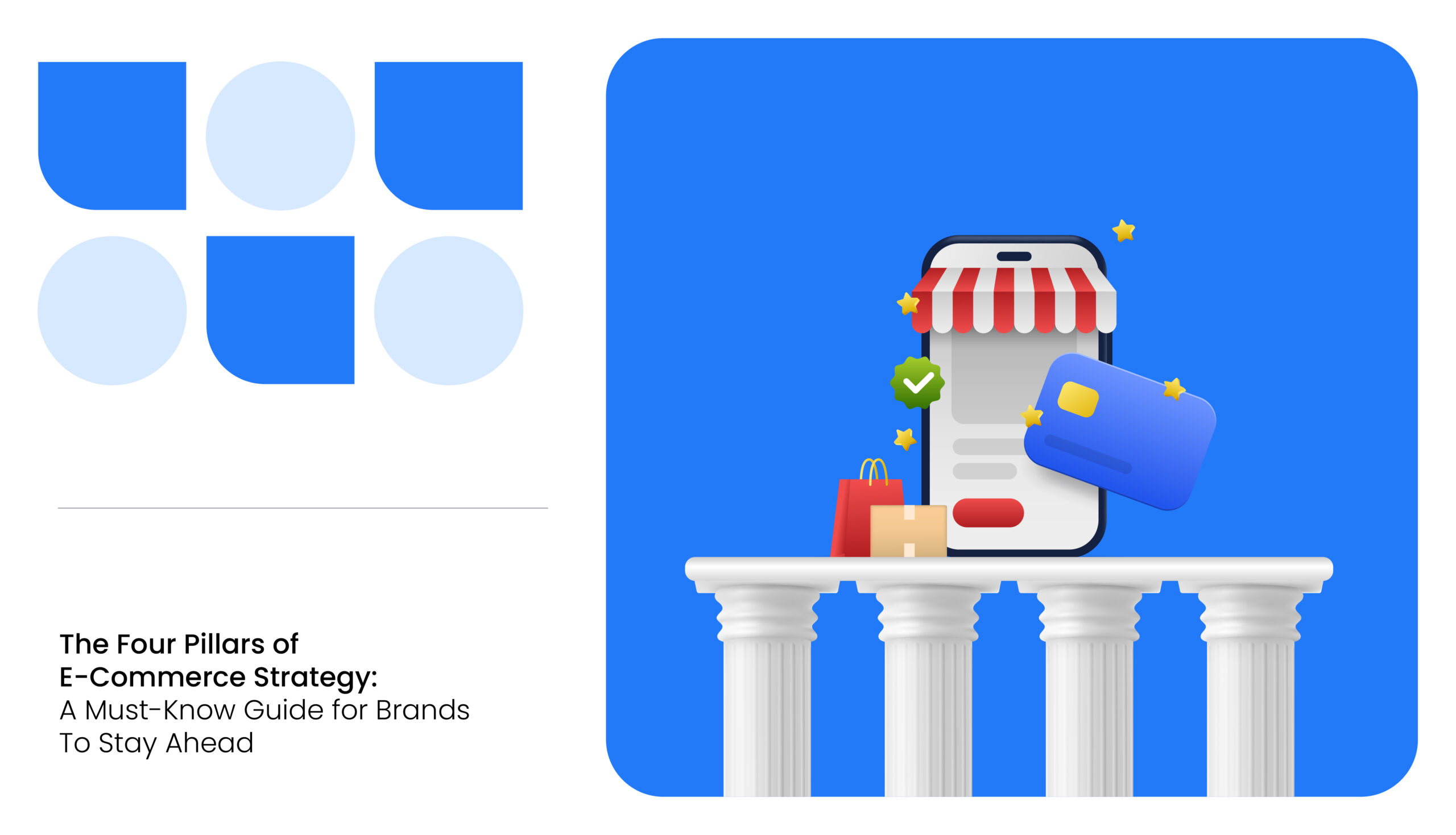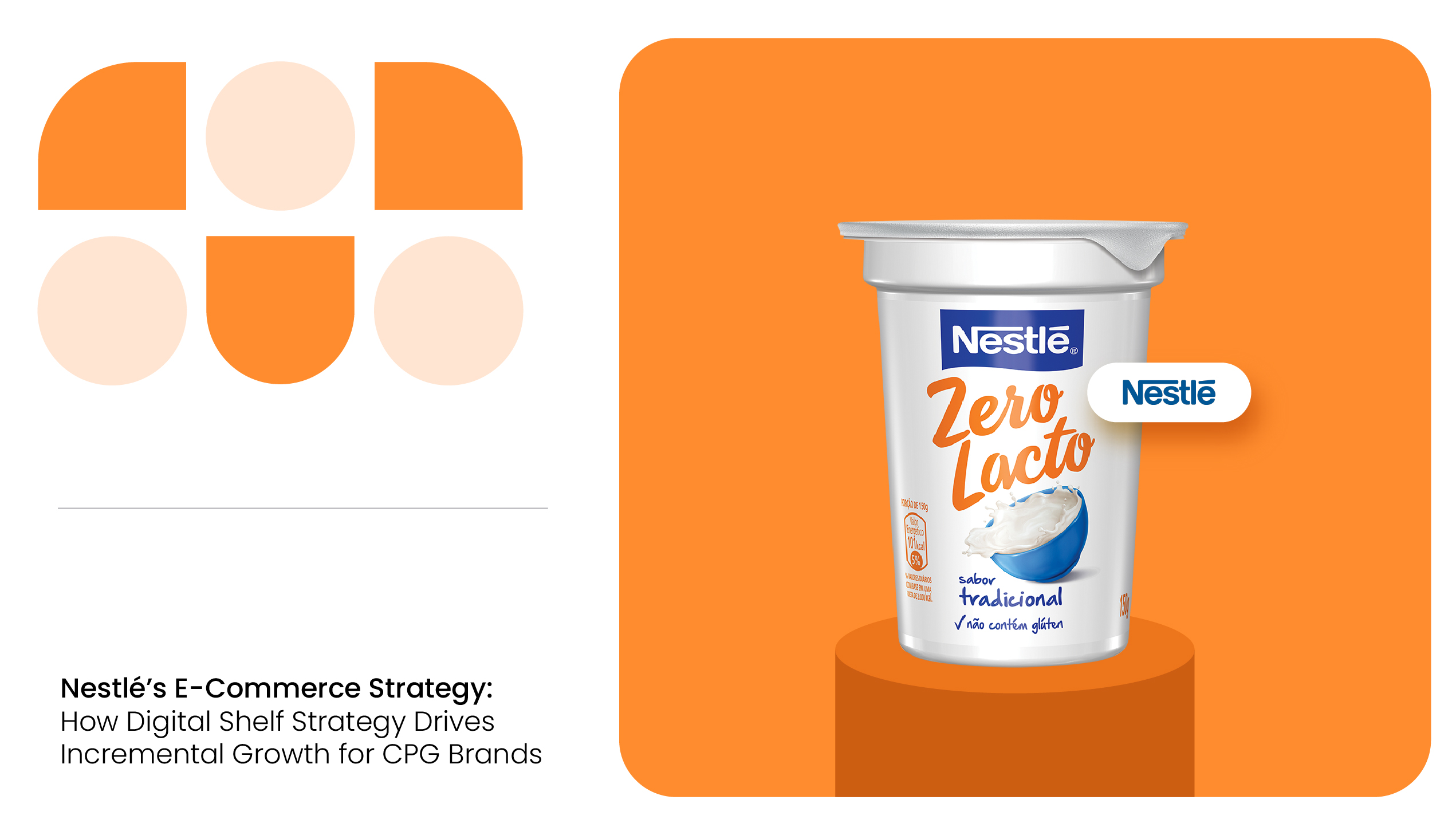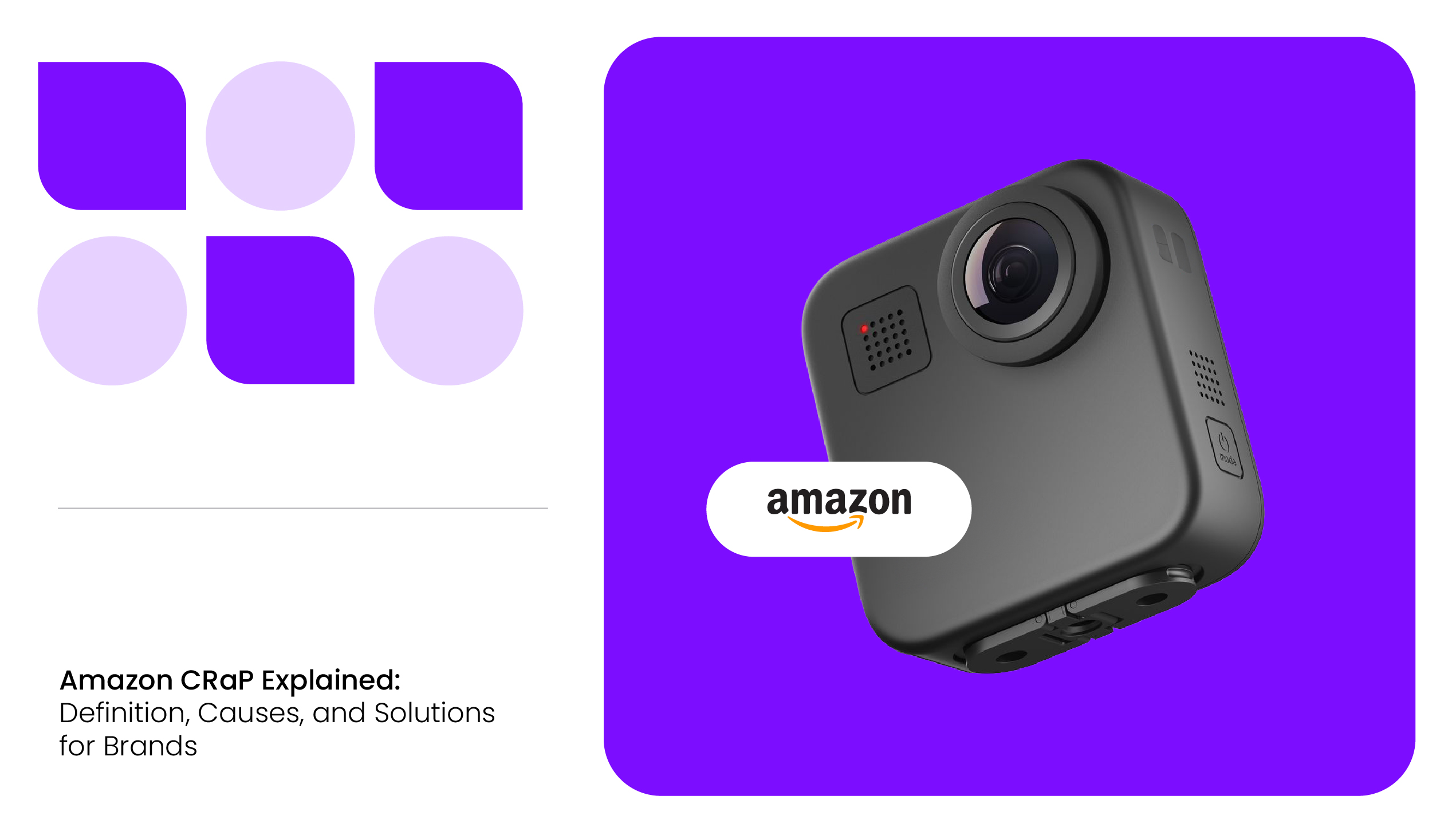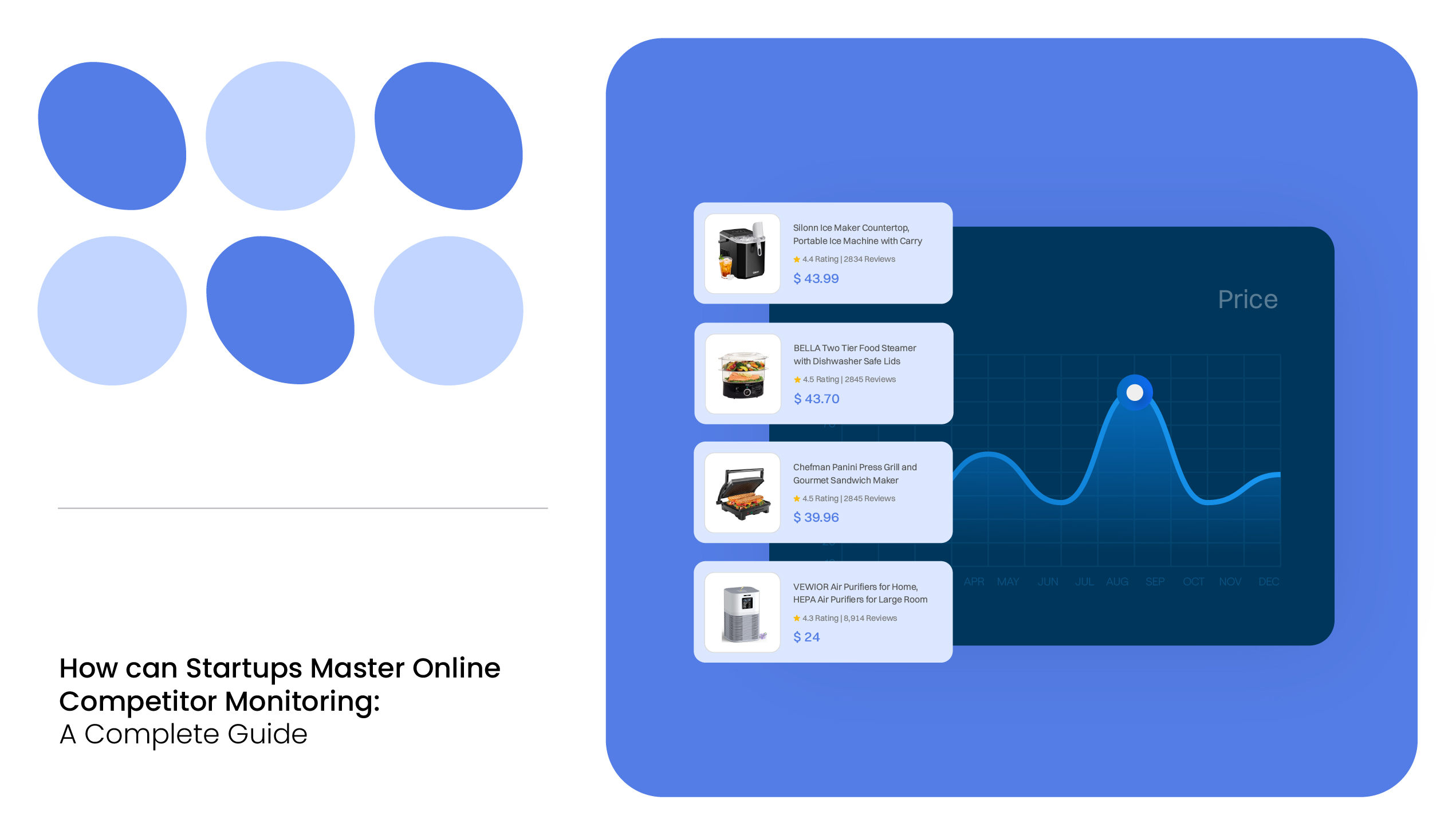Modern consumers crave more than just transactions; they seek connection, trust, and a brand that reflects their values. Success today hinges on creating memorable digital experiences, cultivating loyalty, and standing out through authenticity in a crowded online world.
In this sense, a wise and well-rounded e-commerce strategy for success encompasses the entire customer journey.
The four pillars of e-commerce strategy are a proven framework that helps businesses grow their sales without increasing their budget by improving focus, efficiency, and customer experience. It enables organizations to align internal teams, optimize resource allocation, and deliver more value to their customers.
Additionally, integrating digital shelf analytics software as a complementary tool can provide deeper insights into online performance, helping brands refine their strategies and enhance visibility where it matters most.
READ MORE | Want to know more about the shopping process of consumers? Check out our blog on Optimizing Consumer Buying Process: What Every E-Commerce Brand Needs to Know.
What Are the 4 Pillars of E-Commerce Strategy and How Do They Matter?
Driven by constant digital innovation and rising customer expectations, platforms like Amazon, Shopify, and TikTok Shop are becoming more complex and competitive. To succeed in this dynamic space, businesses need more than isolated marketing efforts; they need an integrated, strategic approach.
This is where the four pillars strategy comes into play. Designed as a unified framework, it helps e-commerce brands achieve maximum performance and growth.
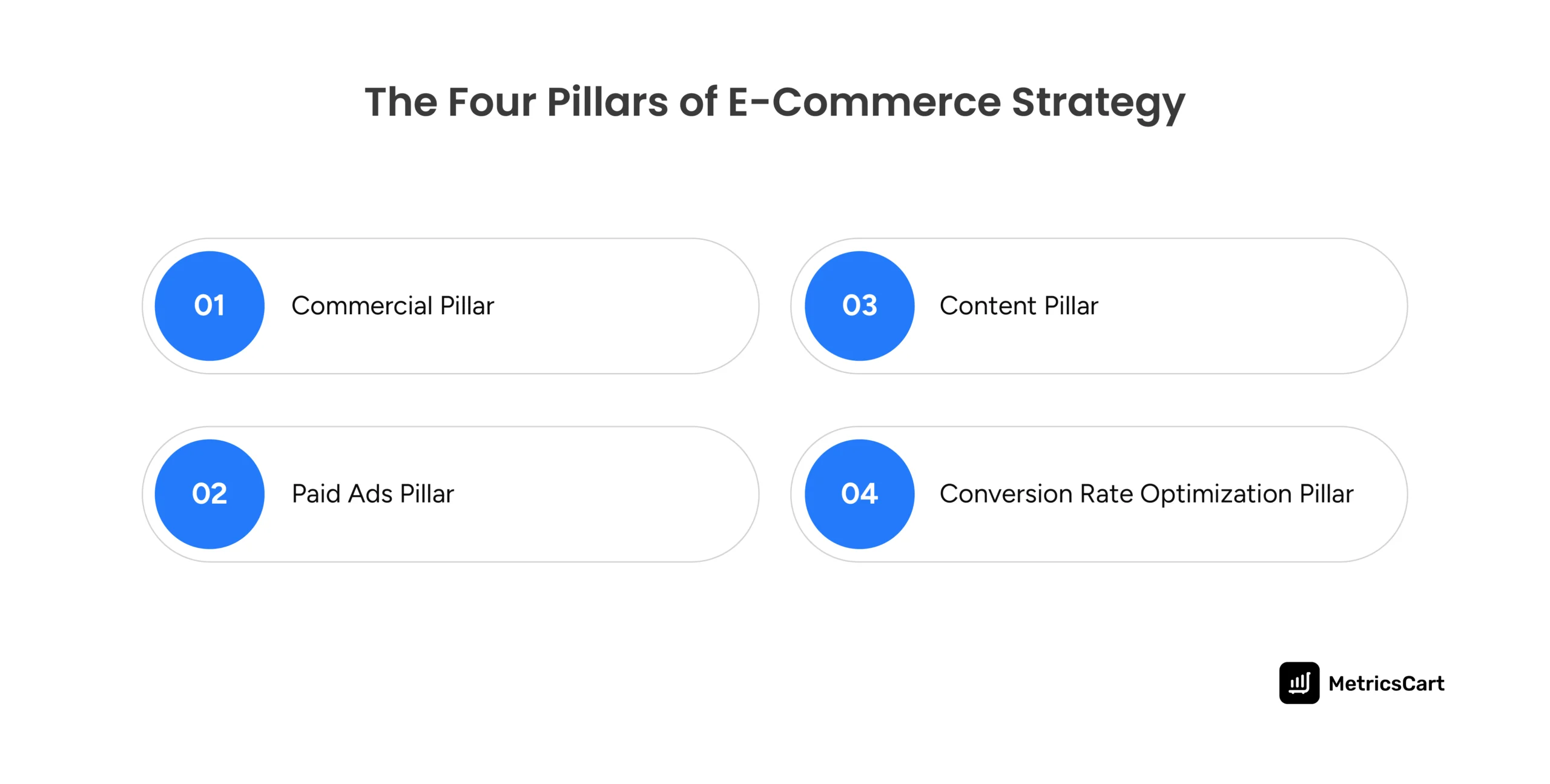
The Commercial Pillar
At the heart of every successful e-commerce business lies a compelling offer. But today, creating an offer is about more than just pricing; it’s about understanding buyer psychology and aligning your promotions with consumer motivation.
There are two essential types of campaigns. The first, called always-on campaigns, includes foundational offers such as site-wide free shipping, first-purchase discounts, and best-seller promotions. These remain active all year long and act as the backbone of your acquisition efforts. They provide consistency and help establish trust over time.
Then, you have on/off campaigns, which are designed to create urgency and capitalize on seasonal or event-driven moments, like Black Friday, Cyber Monday, or summer clearance sales. These campaigns are more dynamic and should be timed precisely, with clear messaging, high-impact visuals, and a focus on immediate value.
To maximize this pillar, brands should regularly test different elements, such as pricing and bundles, and writing product descriptions. They should also evaluate what resonates most through digital shelf KPIs like cart conversion rates and sales spikes.
The goal isn’t just short-term gains but long-term strategy refinement through price monitoring and customer behavior analysis.
The Content Pillar
If offers are the backbone, content is the voice. It’s what communicates your value proposition, builds emotional engagement, and ultimately drives customer action.
Every brand has a unique journey. Use storytelling with content compliance and optimization techniques in your product descriptions, video content, and social media. Authenticity builds trust and elevates your perceived value.
To influence buyers at different stages, you need varied content formats:
- Top-of-funnel: Lifestyle videos, influencer content, branded storytelling.
- Mid-funnel: How-to guides, feature demos, customer testimonials.
- Bottom-of-funnel: Detailed product specs, comparison tables, and FAQs.
Repurpose customer reviews and user-generated content into bite-sized social content. Use review tracking tools to detect trending phrases and sentiments, then reflect those in your creative.

The Paid Ads Pillar
Ads remain a powerful engine for growth, but only when they’re laser-focused. Running paid ads without a structured funnel approach can lead to wasted budget and minimal ROI.
So, follow these steps to create an effective Ad pillar:
- Segment your advertising efforts into clear objectives, such as awareness, consideration, and conversion.
- Ensure that your ad creative aligns with the brand’s intent at every level.
- Track performance metrics such as return on ad spend (ROAS), customer acquisition cost (CAC), and engagement rates.
- Be prepared to regularly tweak and iterate your ads.
In a digital-first world, content is how your brand speaks, and ads are how your brand is seen. These two areas are deeply interconnected, and when combined effectively, they can elevate your business from merely being present online to genuinely making a meaningful impact.
The CRO Pillar
You’ve drawn people in with great offers and engaging content. Now, the focus shifts to the most critical stage, conversion. This is where the CRO (Conversion Rate Optimization) pillar makes all the difference.
When customers arrive on your site, every second matters. Your product pages should be clean, focused, and informative. Use clear, high-resolution images and write compelling descriptions, such as enhanced product content. Include call-to-action buttons that stand out and clearly indicate the next steps.
Building trust is just as important as offering clarity. Features like verified customer reviews, Amazon badges, and visible return policies can reduce hesitation. Adding urgency through low-stock messages or countdown timers can also drive quicker decisions, especially for first-time buyers.
Another critical area is the checkout experience. Long forms, forced account creation, and limited payment options can all lead to cart abandonment. Consider offering guest checkout, integrating digital wallets like Apple Pay or Google Pay, and ensuring the entire process is mobile-friendly.
To truly optimize your site, you need to understand user behavior on a deeper level. Use tools like MetricsCart to analyze key e-commerce KPIs and optimize your digital shelf for maximum impact.
Uncover which products are performing, where visibility is lacking, and what factors are driving conversions or causing drop-offs. These insights are one of the key elements of e-commerce profitability, and they fine-tune your digital presence while boosting overall sales performance.
READ MORE | What is customer feedback analysis? Check out our blog on Customer Feedback Analysis in E-Commerce: The Must-Know Aspects for Brands.
Conclusion
The magic of the four pillars strategy lies in how these areas work together. Your advertising should match the tone and message of your content. Your offers should be backed by data and customer sentiment analysis. Your site should be built to convert the traffic you’ve worked so hard to earn.
To put this into action:
- Begin with a comprehensive review of your existing strategy, using the four pillars as your framework.
- Identify which pillar is underperforming and develop a clear plan to optimize it.
- Set measurable goals for each pillar, such as increasing conversion rates, reducing bounce rates, or enhancing ad efficiency.
- Invest in tools that unify your efforts, such as analytics dashboards, customer review platforms, creative asset managers, and automation software.
More than a checklist, the e-commerce strategy pillars are a mindset shift from fragmented execution to unified, strategic growth. When all four pillars are aligned, brands not only compete but also lead.
Ready To Scale Your Brand and Drive Results? Unlock Your E-Commerce Potential Today!
FAQs
Digital shelf analytics tools like MetricsCart provide insights into product performance, visibility gaps, and conversion drivers. This data complements the Four Pillar strategy by helping brands refine content, optimize digital shelf placement, and make data-driven decisions across all touchpoints.
Always-on campaigns run continuously and include strategies like free shipping or first-purchase discounts. On/off campaigns are short-term promotions tied to events or seasons, like Black Friday or back-to-school sales, designed to drive urgency and high engagement.
An effective ad strategy should segment campaigns by customer journey stages: awareness, consideration, and conversion. It also requires aligning ad creatives with intent, monitoring KPIs like ROAS and CAC, and continuously optimizing based on performance.
Start by auditing your current strategy and measuring key performance indicators for each pillar. Low conversion rates, high bounce rates, or underperforming ad campaigns are signs that a specific pillar may need optimization.
The 3 C’s of E-Commerce are Content, Commerce, and Community. Content drives engagement, Commerce ensures a smooth shopping experience, and Community builds trust through social proof and customer interaction. Together, they create a strong foundation for online business growth.

